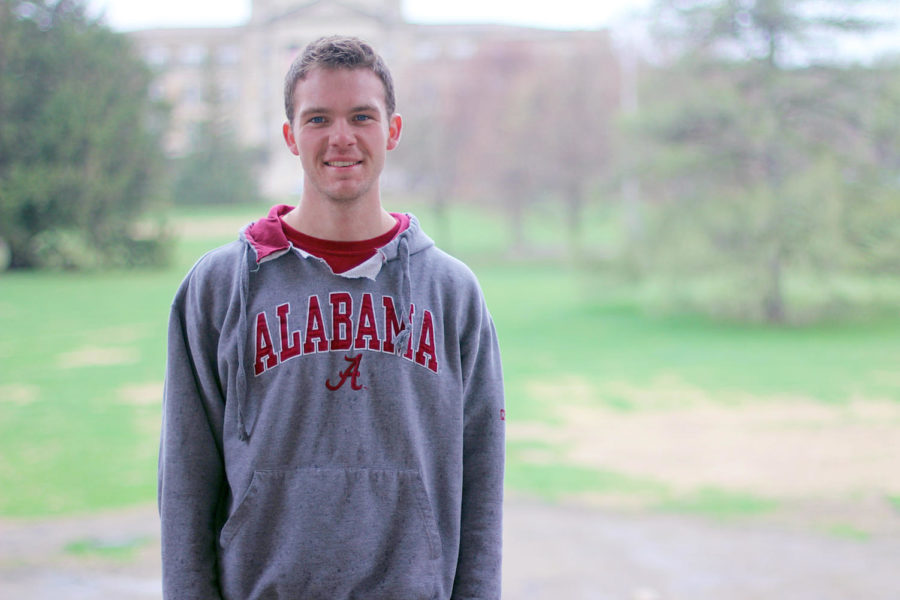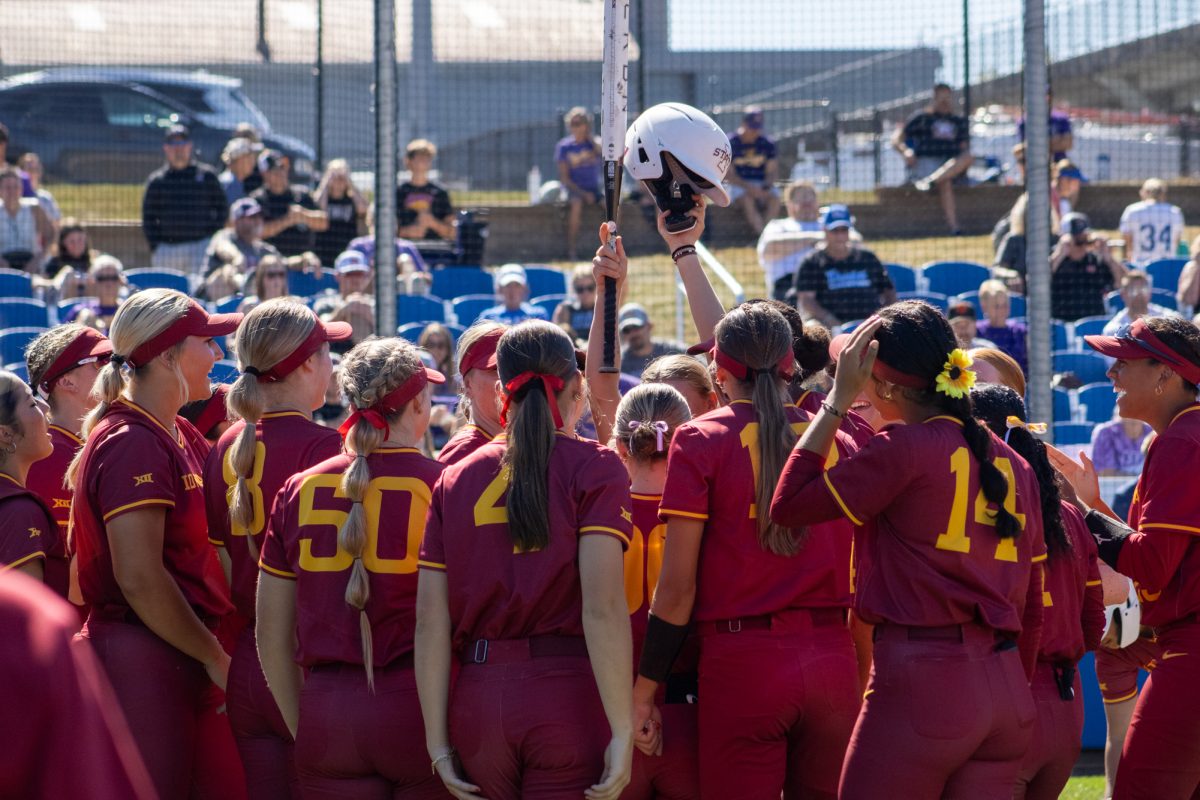National Student Exchange student follows in parents’ footsteps
William Rabe, sophomore in chemical engineering, will be studying at Alabama next fall as part of a low-cost exchange program offered by NSE. Students are given the option to study out of state at culturally diverse campuses with program compatibility.
May 1, 2014
An ISU student will be following in his father’s footsteps when he spends the upcoming school year at the University of Alabama as part of the National Student Exchange program.
William Rabe, a sophomore in chemical engineering and biochemistry from Ramsey, Minn., will have the opportunity to attend the alma mater of both his father and mother next year because of the program.
“Both of my parents went [to Alabama],” Rabe said. “We’re huge Alabama fans.”
Rabe’s father, William Rabe III, spent a year at the University of Alabama as a participant in the National Student Exchange program 31 years ago as a college student at the University of North Dakota.
“He had told me that he had done [the National Student Exchange program] and I didn’t realize that until this year,” Rabe said. “[The University of Alabama] has my major so that worked out pretty well.”
It was at the University of Alabama that Rabe’s father met his mother, Kimmie. Rabe’s father transferred to the University of Alabama and Rabe’s parents continued to study in Alabama until they both completed medical school there.
The National Student Exchange program allows Iowa State students to study at different universities anywhere in the nation without having to pay the out-of-state tuition rate of that school.
About 50 Iowa State students participate in the exchange every semester and can choose to study in places such as: Hawaii, Alaska, New York, California, New Mexico and Florida.
“Part of Iowa State’s mission is to encourage our students to seek out-of-classroom experiences and to really expand their college education,” said Debra Sanborn, the program director of Iowa State’s National Student Exchange program. “Students can take courses that we don’t offer here or add a different component to their academic curriculum that really suits their needs.”
Sanborn also said that the program can help students study at institutions where they might want to attend graduate school, experience living in a part of the country where they would like to live in someday and learn from other experts in their field of study.
When a student participates in the National Student Exchange program, they pay the in-state tuition rate of the school they are going to. Any scholarships and financial aid that a student receives from Iowa State will be available to them during the exchange.
“There are scholarships and grants related to extracurricular programs that students are able to apply for.” Sanborn said.
One of these grants comes from the Pilar A. Garcia Student Achievement Fund where students can request up to $1,000 per academic year to use for: studying abroad, traveling to conferences, research projects and other related activities.
Rabe said that some scholarships and his savings will help offset the costs of going to school in Alabama for the next school year. Paying Alabama’s in-state tuition rate of $4,725 instead of its non-resident rate of $11,975 has also saved Rabe some money.
Rabe said that he’s looking forward to attending football games, meeting new people, staying at the Delta Chi fraternity house and the climate at the University of Alabama.
“I’m really looking forward to the warm weather all year.” Rabe said.
Rabe hopes to attend medical school or a master’s program in his area of study after he graduates from Iowa State.
“I want to go on into the field of medical technology or nanotechnology,” Rabe said. “I’m really into science, math and engineering.”
The deadline to participate in the program for the next school year or just this upcoming fall semester is May 1. Students wanting to participate in the program only the next spring semester have until Oct. 1 to apply.
More information about Iowa State’s National Student Exchange program and how to participate in an exchange can be found on their website: http://www.dso.iastate.edu/nse.







